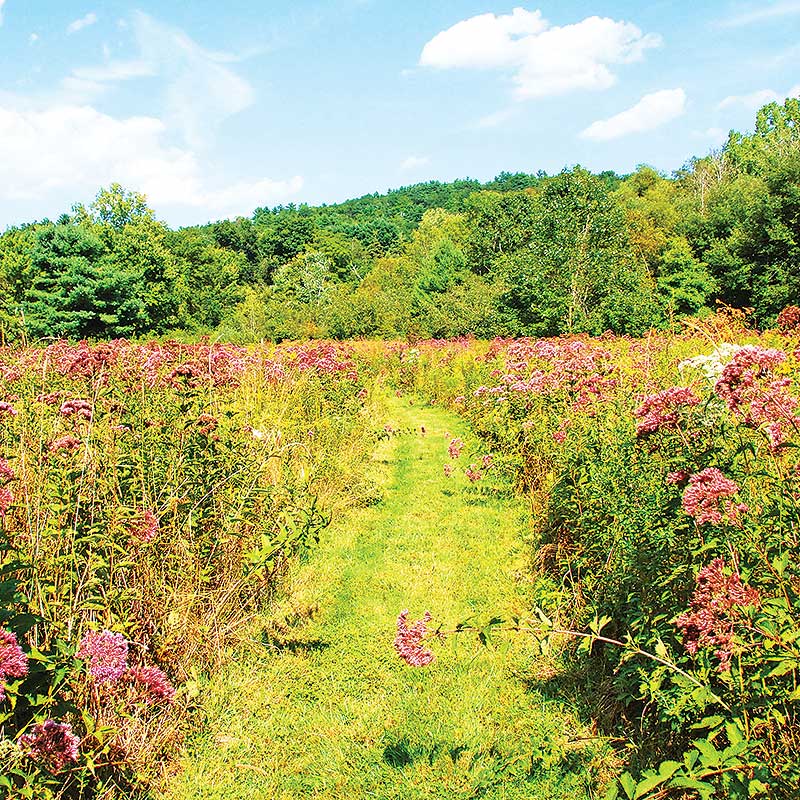
What kind of property does the Simsbury Land Trust protect?
Simsbury Land Trust protects a wide variety of important parcels of open space in Simsbury. Our focus is on four distinct and important types: fields and farms, ridges, wetlands, and scenic vistas.
Fields and Farms
Simsbury’s fields and farms provide habitats for a whole range of birds, flowers, and other wildlife that depend on grass and brush environments, and they contribute disproportionately to the scenery in town. We enjoy looking at fields, and fields enable us to see beyond. Without periodic wildfire and uninterrupted beaver activity, fields are not a natural phenomenon and therefore need active management to continue to exist. An effective and efficient way to accomplish this is to see that farms continue to exist.
Ridges
People often talk of a recognizable sense of place, a particular character, when they speak of Simsbury. Much of what they mean by this derives from a number of geological features highlighted by grand river valley tucked between two dramatic ridges.
Traprock ridges exist in New England in a very limited area, primarily along the southern Connecticut River Valley. Simsbury has more of these volcanic outcroppings within its boundary than nearly any other town in Massachusetts or Connecticut. They create an unusual variety of distinct habitats and, as a result, a disproportionate number of state-listed uncommon, rare, or endangered plants and animals. They also provide exceptional hiking opportunities enhanced by several miles of trails the Simsbury Land Trust maintains.
Wetlands
Wetlands are among our most important types of open space, providing the essential functions of water retention and purification. They also harbor the largest amount and variety of life of any habitat in Simsbury. As would be expected in a river valley bounded by ridges, wetlands can be found in every part of town, from the floodplain itself to vernal or seasonal pools and seasonal streams high in the hills. However, they have become partitioned over the years as residential development has spread into private nooks and crannies and into more marginally developable areas. As wetlands are divided into smaller and more isolated parcels, migration patterns are altered, wildlife with minimum range requirements disappear, and the life that remains lives under additional stress from nearby chemicals, family pets, and changes in water levels.
Simsbury boasts several types of wetlands, defined primarily by the distinctive plants and animals each supports. Among these are the river and its tributary streams, year-round ponds, red maple or brush swamps, bogs, wet meadows, and vernal ponds. The loss of any one of these wetland types would diminish the rich variety of plants, insects, birds, amphibians, reptiles, and mammals that share this part of the earth with us.
Scenic Vistas
One of the most important factors in creating our sense of place is the visual landscape. Simsbury is fortunate to have a number of notable physical features. To a degree the community has been successful in maintaining well distributed panoramas where development is scattered, hidden or non-existent. There is a contentment and hopefulness that comes with living within a natural setting that we do not experience in a manmade world surrounding isolated parks, no matter how spectacular those parks might be.
Continuous natural corridors or greenbelts are much more valuable than individual, isolated parcels. They support a wider variety of species because of greater size, a greater likelihood of mixed habitats, better buffers from incompatible use, and generally more interesting hiking and educational opportunities.
We remain as convinced today that this is where our focus should be and where we can do the most good with the time and resources at hand.
